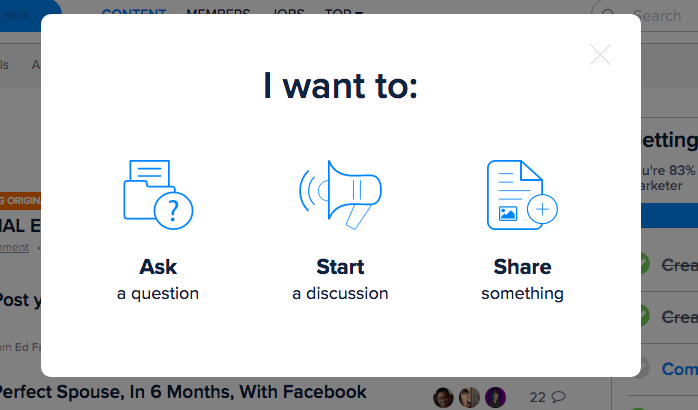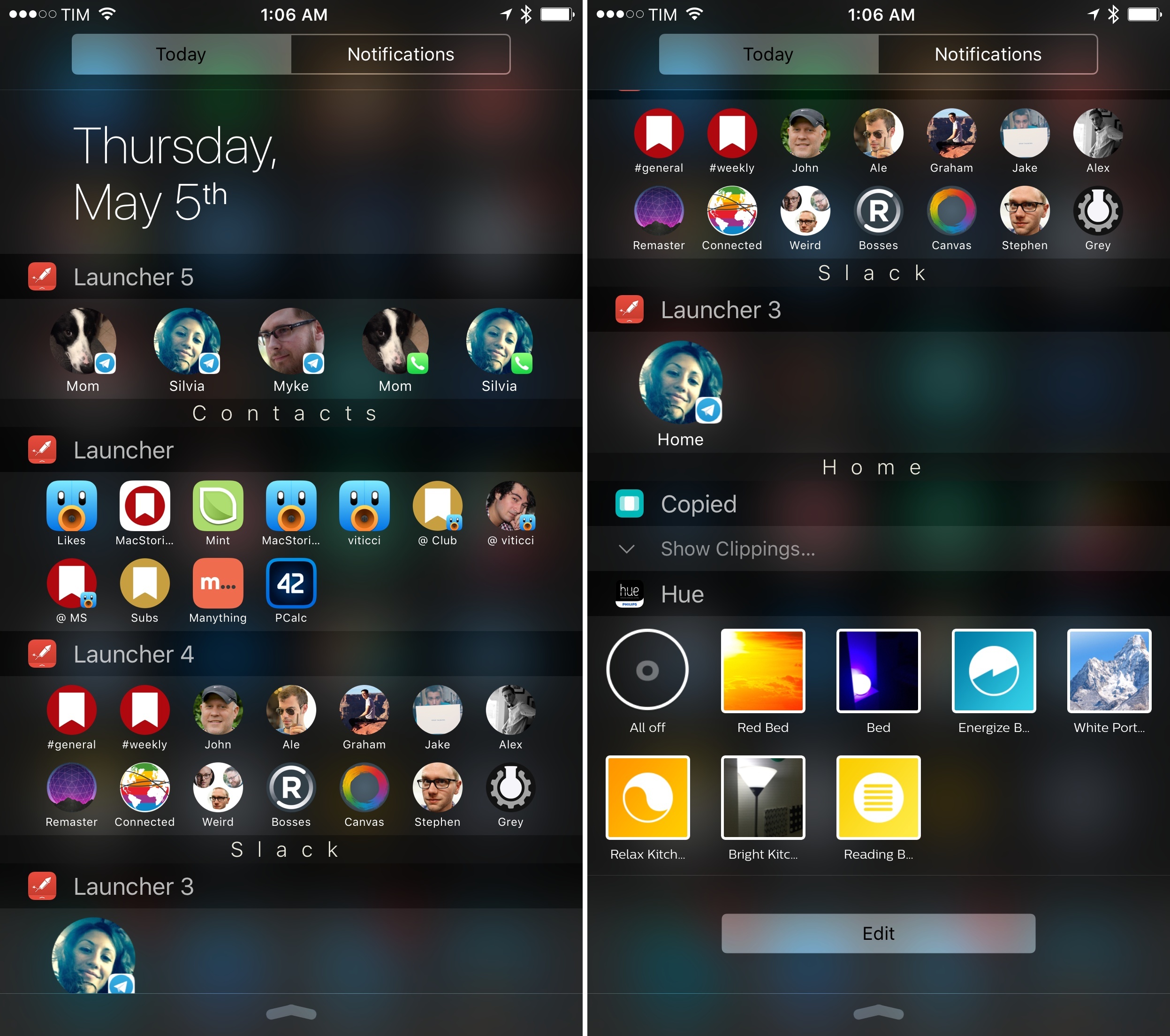Sarah Perry is a contributing editor of Ribbonfarm.
“Last year I organised to do a stunt with my pals. The stunt was to jump out the window from the 10th floor of a flat onto all these boxes of cardboard and stuff. At the start it was just a laugh and I wasn’t really going to go through with it, but then it got serious and everybody was there so I just had to go through with it.” [H]is participation in the stunt was motivated by “not wanting them [his friends, who were videotaping the ordeal ‘for the internet’] to think that I was a chicken.” He described feeling intense fear immediately before the event (“when I got up to it I thought I was going to die when I leaped”), followed by an equally intense release (“when I got down it was a relief, but I broke my arm”).
Morrissey, S. A. Performing risks: catharsis, carnival and capital in the risk society. Journal of youth studies, 11(4), 413-427 (2008).
F. (8). Dared to eat poison ivy. Did so.
F. (9). A number of girls were playing in an alley which went from one street to the other and had several barns and an undertaking establishment on it. Girls dared Edna to go through when it was dark. She was afraid but took the dare, went through and returned with a feeling of approbation.
Boland, Genevieve. Taking a dare. The Pedagogical Seminary, 17(4), 510-524 (1910).
Pringle records the case of a man of twenty who swallowed seven nails one inch long “on a dare.” Eight days later he came to operation and the nails were found in the caecum. He died of post-operative ileus and autopsy showed early necrosis of caecum and ascending colon. Another patient (Genglaire) swallowed thirty frogs and had no symptoms until they reached the rectum. A large mass of tangled frog bones was extricated manually.
Carp, Louis. Foreign bodies in the intestine. Annals of surgery, 85(4), 575 (1927).
A 16-year-old girl developed a cough, hypereosinophilia…, hypergammaglobulinemia, and multiple noncavitary pulmonary nodules 1 month after having ingested an earthworm on a dare… In this instance, the ingested earthworm served as the paratenic carrier of toxocara larvae from the soil to the patient.
Cianferoni, A., Schneider, L., Schantz, P. M., Brown, D., & Fox, L. M. Visceral larva migrans associated with earthworm ingestion: clinical evolution in an adolescent patient. Pediatrics, 117(2), e336-e339 (2006).
For almost every tiny aspect of human life, there is a large, imposing body of literature purporting to explain it. Hypotheses are proposed, supported, and discarded; new journals are created and filled with empirical studies; theoretical frameworks are proposed that cut the subject every which way.
Not so, it seems, for dares.
Dares, in the sense of “I dare you,” are widespread in human culture, and children start daring each other in early childhood. It is not clear how universal the phenomenon is; “risk-taking” is on Donald Brown’s list of human universals, but not dares specifically. Cross-cultural work is lacking, though I have found descriptions of daring from Brazil, India, the Netherlands (in sign language), and Indonesia, as well as the United States and many parts of Europe. As far as I can tell, no one has written The Sociology of the Dare or even The Economics of the Dare, except in passing on some other topic. Empirical work is sparse, though luckily there is some detailed qualitative work from over a century ago. There is, as far as I know, no Journal of Dare Studies.
Yet dares are exciting. Daring games sometimes spread rapidly over the internet (for example, the Ice Bucket Challenge), evidencing their continuing appeal. People buy and play “Shocking Roulette,” a toy (it’s not really a game) where four people each put their finger into a slot and the game randomly administers an electric shock to one of them, after an agonizing countdown. Celebrities often attribute their starts on the stage to dares taken; whether these stories are true or not, it shows that the dare narrative is appealing.
And dares can be stupid and dangerous. The dare descriptions above give some idea of the mortality and morbidity caused by dares; G. Stanley Hall & Theodate Smith (Showing off and bashfulness as phases of self-consciousness, The Pedagogical Seminary, 10(2), 159-199, 1903) report that out of 84 dares reported to them by children, twelve experienced broken bones or “serious sprains” as a result, and many others were injured in other ways. Broken bones are frequent consequences for many of Genevieve Boland’s (1910) informants. The stories about dares that make it into the news are often dares gone wrong that result in drowning or other severe consequences.
If the consequences are so serious, why do humans participate in dares? Why are they so common and such powerful motivators? What do they do, and what are they for?
A Reputation for Valuing Reputation
Barry O’Neill (The strategy of challenges: two beheading games in medieval literature, Game Equilibrium Models IV: Social and Political Interaction, 124-49, 1991)
proposes a costly signaling theory of dares: taking a dare is an opportunity to demonstrate one’s willingness to endure risk or discomfort for the sake of one’s reputation. As such, it is a kind of ritual. All rituals have a sacrifice; the sacrifice in the dare ritual is some limited form of suffering.
Dares are about reputation. But reputation for what, exactly? O’Neill answers this question recursively: taking a dare signals that the daree values his reputation for valuing his reputation in general:
Taking the case of a dare to eat a slug, the reputation could not be one of indifference to eating slugs. Having that name would make you a celebrity, but it would not raise your degree of respect or dominance in the group. If it became known that you savoured slugs, the dare would not be regarded as a real test, and the group would simply choose another task. For the daree’s purposes, the audience must know that he or she finds the task aversive but is strong‐willed enough to do it anyway for the sake of the reputational goal. Eating the slug functions like a measuring marker, to show how highly the daree values reputation.
My thesis is that the content of the reputation at stake in dares can be defined recursively. The reputation is for valuing reputation. The child is in effect saying, “I don’t like to eat this, but I’ll do it. I attach great importance to your estimate of this very importance. When you see me eat this slug, you raise your estimate of that importance.”
…A reputation for valuing reputation might be desirable exactly because it is free of links to specific traits. Onlookers can generalize it to other contexts more readily, in that they infer that the daree would face other risks and discomforts for the sake of reputation.
Dares are social signaling at its purest: not signaling any quality in particular, but valuing one’s reputation in general.
A dare has three participants, all affected in different ways: the darer, the daree, and the audience (which may be just the darer, or any number of other people). In O’Neill’s model, the daree is offered the opportunity to send a costly signal, and the audience (including the darer) is offered information about how the daree might behave in frightening or stressful situations. A child who takes a dare – even a seemingly antisocial dare – signals to the audience his willingness to act prosocially toward them in other contexts. If you have seen your friend overcome his fear in some dangerous dare, he is that much more likely, perhaps, not to run away when you are waging a battle, hunting together, or involved in a risky business venture.
The subject of a dare must be aversive. Its unpleasantness to the daree is in proportion to its signaling value. (In the next section, we will look at the content of dares to see what kinds of aversiveness are represented, and what that means.) Videos of people using the dissociative (and very unpleasant) drug Salvia are very popular on YouTube; this appears to be a dare phenomenon. Videos where subjects display aversive effects are more popular than videos of relatively pleasant trips, say Paterline & Albo (A content analysis of Salvia divinorum use on YouTube, The Journal of Public and Professional Sociology, 5(1), 6, 2013). The more unpleasant the effects, the more attractive the “dare” video.
A dare is distinct from a bribe or blackmail, where incentives are offered other than reputation-for-reputation. And dares, O’Neill says, center on discrete, measurable acts that are easily observed and verifiable by the audience. It doesn’t work if I dare you not to think about chickens.
Not all dares are taken, of course. Genevieve Boland reports 191 accepted dares and 28 dare refusals; Lewis & Lewis (Peer pressure and risk-taking behaviors in children, American Journal of Public Health, 74(6), 580-584, 1984) report that as many dares are refused as accepted among their 771 middle schoolers. By daring, the darer opens a negotiation; the daree may accept, refuse, or counteroffer. The “double dare” is usually thought of as an intense (or particularly naughty) form of a dare, but one of Boland’s informants proposes a different usage:
F. (8). When I was 8 I was once dared to jump off the church steps. The little girl told me she double dared me which meant she would do it after me. I did not want to seem babyish, so did it, not only once but three or four times in succession.
Boland’s other informants use “double dare” in its present meaning, as an intensifier of a dare. But the mutual kind of “double dare” that this eight-year-old girl participated in exemplifies one of the negotiation strategies open to the darer. And the daree often dares back, or conditions his compliance on some other’s performance (Boland, 2010):
M. (12). One day I was swimming in the canal near a small foot bridge which was, perhaps, 15 ft. above the water. One of the boys dared me to dive from the bridge, but I was afraid to do it. He then dared me to jump from the bridge. I hesitated, but finally said if one of the other boys would jump I would. The other boy jumped and I was still afraid.
I stood there for a moment, shut my eyes and jumped. The only feeling I remember is that the longer I stood looking the greater seemed the distance.
Daring, then, is a negotiation.
Play among young animals is always serious, in the sense that it is practice for the work of the adult animal. The kind of reputation play exemplified by dares allows children to practice risk, negotiation, and social signaling. They define themselves and their groups through their speech acts and actions. Social standing and belonging have been so important to survival that they are worth risking death and injury in order to maintain.
Many dares are antisocial acts, potentially harming not only the daree but also others. Disobedience of parents (or law) is a common theme. They are not prosocial rituals in the same way that feasts, religious services, weddings, and funerals are. Perhaps there is something else going on.
Psychopath Awareness
Dares require the daree to do something unpleasant. We can classify dares by the aversive emotion that they trigger. (Example dares are all from Boland, 1910.)
1. Disgust. Darees may be asked to handle caterpillars or worms, or to eat noxious, unpleasant, or non-food items. Raw onions, spoonfuls of horseradish, hot peppers, poison ivy, poison sumac, mud pies, dirt, and unripe fruit are all reported to have been consumed, not to mention those thirty frogs.
F. (16). Dared to eat a certain weed. Was afraid but had seen the cat eat it, so felt she would not die if she ate it.
M. (6). Dared to eat a bottle of quinine pills.
F. (7). To eat a mud pie. Unable to finish it.
F. (10). Heard it would make a person sick to eat a raw oyster with sugar on it. Was dared to do it and ate one.
F. (8). Dared to eat poison ivy. Did so.
F. (12). Dared to eat horse chestnut.
F. (6). To eat soap and starch with oil in it.
2. Fear. Darees are asked to jump from high places, to jump onto moving vehicles or horses, to skate on thin ice, to dive into dangerous water.
F. (8). When I was about 8 years old, a little schoolmate of mine dared me to stand on the track when a trolley car was coming along. I stood there although very much frightened until the motorman yelled at me.
F. (6). When I was about 5 yrs. old my brother dared me to jump from the porch to the ground, which was a considerable distance. This I was very much afraid to do but finally I gathered up the courage and jumped.
3. Shame. Darees are challenged to violate norms: to dress in clothes judged not appropriate for their age, social standing, or sex; to talk to strangers; to give incorrect answers in class. Rejection may also be risked; one of my informants was dared to ask out the prettiest girl in school (though, much to his surprise, she accepted).
F. (10). To wave at strangers going by the school.
F. (11). Dared to say Gordon’s corner when asked the capital of a country in Africa. Excused from the class for it.
F. (7). Dared to dress up in old clothes and play mother was a washer-woman. Did so and passed the morning on the street telling people about poverty of the family.
F. (8). Wear brother’s clothes out doors.
F. (9). Dressed in mother’s clothes and went out on the street.
M. (9). Dared to wear mother’s sunbonnet to post-office. Did it.
4. Guilt. Darees are asked to violate their parents’ authority or cause material or physical harm to others. If they perform the deed, they often feel quite guilty about it. Remorse may even follow.
F. (7). We had what we thought was a hard reading lesson. The other girls tore theirs out of their books and dared me to do the same. At first they called me names and then I thought I was a coward so I tore the lesson out. I felt I had done a great wrong and had no peace until I had told the teacher.
F. (9). Late frequently at school. Carried a note home every day. Dared to tear it up. Did so without looking in note. Wondered what mother would say.
F. (10). To write an excuse from school and stay out. Did so but did not enjoy herself.
In his fascinating 2015 book for general audiences, The Psychopath Code, Pieter Hintjens proposes an evolutionary classification of primary human emotions. The most basic group he calls predator emotions; according to Hintjens, these are the only emotions that psychopaths can feel. Social humans, however, have a much broader emotional register, around fifty emotions total, grouped as follows:
- The predator emotions help us hunt and capture prey.
- The defense emotions prepare us to detect and deal with predators and competitors.
- The sexual emotions drive us to find sexual partners.
- The family emotions let us talk to our parents and care for our offspring.
- The group emotions let us form small social groups.
- The social emotions let us form looser and larger social groups.
Predator emotions, including hunger, obsession, fury, bloodlust, and satiation, are only for purposes of motivating action, not for display or coordination with others. The other classes of emotion include display emotions. Emotions such as disgust, fear, shame, and remorse have characteristic displays (many of which are hard or impossible to fake, such as blushing for shame), giving the audience information about another’s mental state. Disgust, for instance:
Disgust is how you warn others to stop eating. Blood flows to your digestive tract. Your stomach prepares to vomit. You make noises and a specific grimace to warn others. You narrow your eyebrows, curl your upper lip, wrinkle your nose, and stick your tongue out. You look at others to make sure they got the message. You make a characteristic groan.
(Hintjens at p. 212.)
Hintjens makes the bold claim that psychopaths do not feel or display disgust, and can make at best a studied approximation of the other social emotions. The psychopath, he says,
does not show disgust when eating something bad. He just spits it out and throws it away. He does not respond to disgust with his own disgust face. He just stops eating. Again, if he learns to mimic, timing and volume will be “wrong.”
Dares offer a tour through the more social emotions: emotions that have associated displays that provide information to others, and that both trigger and respond to other social emotions. A dare offers the daree the opportunity to display his social emotions in front of others, and the daree in turn offers the audience information on his social display.
A social person will display fear when asked to jump from heights, disgust when eating a worm or a mud pie, shame when violating a social norm in public, guilt when disobeying moral authority or causing harm. The remorse displayed afterwards may be part of the information offered by dares.
Dares, in other words, are a psychopath test. They allow the opportunity to scrutinize people’s displays of social emotions on demand, rather than having to wait for an aversive event to happen.
The use (and often excessive use) of alcohol and other mind-altering substances is frequently the topic of a dare. This allows the audience to see the daree in a less guarded state, providing even more information about the daree’s mental state and character. Hintjens claims that psychopaths avoid mind-altering substance consumption to the point of intoxication around others, though they may encourage other to use excessively.
Of course, if dares worked perfectly in this way, there wouldn’t be any psychopaths. Hintjens’ model is a cycle of predators and prey, with psychopaths preying on social humans for resources. Their numbers relative to social humans vary over time, as with population cycles of foxes and rabbits. Psychopaths are a small but significant portion of humanity; Hintjens estimates that around 4% of humans are psychopaths as a very rough estimate, and posits that both they and social humans have been shaped by each other over the course of evolution. If psychopaths are not able to feel and properly display social emotions, and if avoiding predation by psychopaths has been important in our evolutionary history, then dares may be a kind of evolved Voight-Kampff machine that social humans use to detect and maintain awareness of psychopaths in their midst.
Psychopaths have many defenses available. As I said above, dares are a negotiation. The psychopath may give dares in a different way than social humans: to control, to harm, to bully, rather than to challenge, get information, and have fun. The psychopath may refuse dares, or may endure the dare with creepy, inhuman stoicism and spin that as courage.
A Note on Creativity, Dares, Psychopathy, and Leadership
Other than Barry O’Neill, most of the authors writing about dares take a negative view of dares. Genevieve Boland, however, takes a balanced view; she notes that Lewis Terman (A preliminary study in the psychology and pedagogy of leadership, The Pedagogical Seminary, 11(4), 413-483, 1904) found children identified as leaders of their groups tended to be more daring.
The quality that Terman found most reliably associated with child leaders, both boys and girls, was that their creative activity in devising and playing games. This may even make up for other personality defects; children who are generally disliked may be leaders if they are good at composing and organizing plays, inventing games, and the like. A few examples (Terman, 1904, pp. 438-440):
Boy. Persuaded 35 or 40 boys to come together for military drill. He acted as captain. Through his efforts an entertainment was given and money raised to buy linen suits.
Girl. Was leader in everything we did. She always proposed our games. It seemed we could have more fun when she planned things. Others had greater mental ability but all of us stood aside for her to move first. She was much larger than the rest of us and a little older. She had beautiful manners.
Boy of 12. Not attractive, but rules his schoolmates absolutely. He is selfish, rude, cruel, and inspires fear. He is inventive and clever.
Girl of 12. Leader of all the rest of us. We always followed her willingly. No matter what game we played, she was “it.” Could run, jump and climb fences better than any of the girls. She was never at a loss in thinking up new games.
Girl of 14. Rules the girls with absolute sway. She makes new games, assigns parts, settles disputes and enforces commands. Keen sense of justice, ability to think quickly, and ready expression.
Girl of 12. Because she knew stories and could dramatize them was leader of about 15 children. Was also skillful in athletic feats.
Boy of 12. Planned our play and conducted it. Could tell stories and illustrate them with drawing. Could do all kinds of tricks and make pretty toys. Older and larger than the others. Read much.
Boy of 13. A “ring leader.” Broader experience than the others. Had been in town schools. Always had a scheme to interest others. Not truthful or honest, but polite, good in games, and very bright. Was younger than his followers.
Children follow those who can invent, organize, and get things done to relieve their common boredom. Inventing new dares as well as new games and plays may be expected of a leader, and requires creativity as well as social power.
Some children identified as leaders displayed psychopathic traits (selfish, rude, cruel). But, interestingly, psychopathic traits seem to be much more of a predictor of children identified as outcasts than as leaders. While some children were outcast because they were poor or unattractive, these were a minority of the outcast children in 1904. Accurately or not, informants asserted that many more outcast children were so because of bad character. Half of Terman’s male outcasts and a third of the female outcasts were identified as possessing “teasing, domineering ways, quarrelsomeness, selfishness, bad disposition” and the like. One outcast girl nearly has Hintjens’ full list of psychopathic traits in her brief description:
Girl of 16. Very pretty, over-dressed, vain, cruel to animals, ill-mannered, wanted to be babied. Yet was quite attractive at first meeting.
Children are often cruel in their exclusion, but they may also be learning to protect themselves from bad actors in their midst.
Being a leader often requires a lot of effort, much of it creative and fluid. As in Kevin Simler’s model of “superorganisms,” the other children repay the leader’s efforts with obedience and approval (sucking up).
Hintjens says (p. 35):
We create for ourselves and others. We create to make other people feel something. Usually, it’s happiness, though sometimes it’s loss, sadness, or other emotions. A creative act is a message of empathy. And we measure the quality of our art as we do our humor: by its originality, and thus its authenticity.
He makes the provocative claim that, while psychopaths may be “creative” in coming up with excuses for their actions, they do not have creative hobbies, and are not able to respond emotionally to aesthetic beauty. The psychopath “has no creative hobbies,” Hintjens says. “He does not tend a garden, nor cook, paint, sculpt, compose music, or write for pleasure. He prefers to travel, meet new people, and shop.” And psychopaths don’t like card games or board games. A psychopath child would likely be hampered in constantly coming up with new games and plays.
While psychopaths often end up as leaders in the adult world, they do not have the ability to manage flourishing, happy groups.
Precious Ignorance
We don’t know very much about dares. They are widespread, but how universal are they? Do some societies engage in dares more than others, or not at all? How does the content of dares vary across societies? Do psychopaths give and take dares, and if so, how do they perform? Does performing a dare increase a child’s social standing? Does refusing a dare decrease it? What is the toll, in death and injury, from dares?
I have offered sketches of a couple of theories about how dares function in human culture; I imagine there are many more possibilities. I was delighted to find this apparently neglected area of the study of humans, and while I doubt my research will ever answer the questions in the above paragraph, I offer you this precious zone of ignorance that I found in case you are in need of a mystery.


















































































